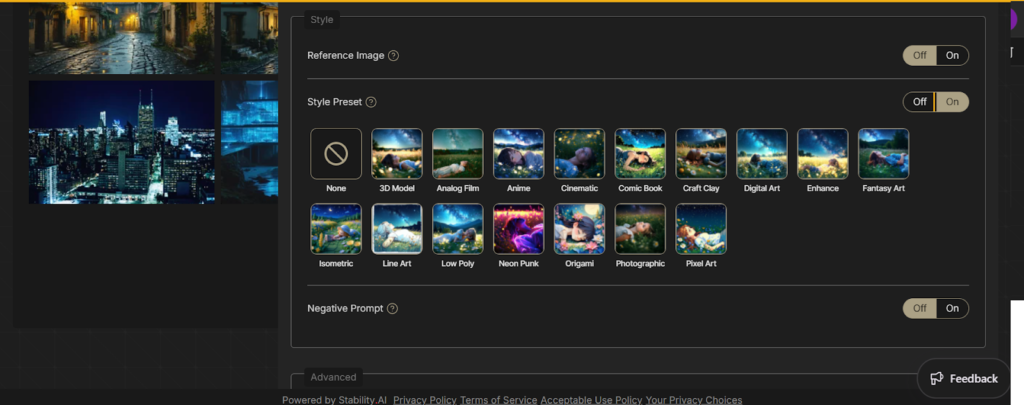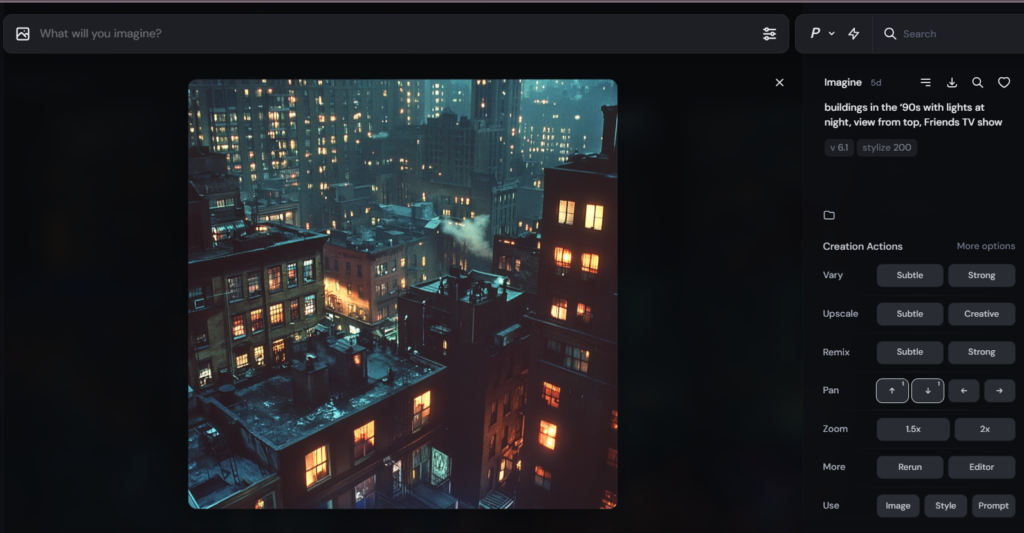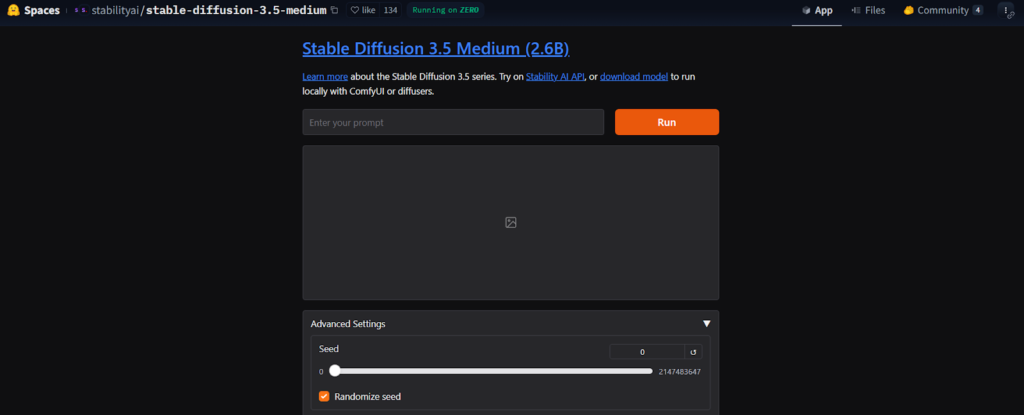When it comes to AI image generation, the debate often centers around Midjourney vs Stable Diffusion, two leading tools praised for their sophisticated capabilities and innovative approaches. Their popularity stems from their powerful artistic features addressing diverse user needs, but knowing the differences between their respective strengths and weaknesses can help you determine which is better for your particular needs.
To help you decide, I compared both tools on their key attributes, including image quality, prompt fidelity, accessibility, user friendliness, and pricing. Here’s what you need to know.
KEY TAKEAWAYS
- Midjourney delivers good core features and superior customer support quality. However, Stable Diffusion is more consistent, user-friendly, and accessible, with better pricing and a more comprehensive ownership and ethical policy. (Jump to Section)
- Although both Stable Diffusion and Midjourney have solid capabilities, neither is perfect for all scenarios. (Jump to Section)
- There are other AI image generators you can try if neither Midjourney nor Stable Diffusion fits your needs. (Jump to Section)
Featured Partners: Artificial Intelligence Software
Midjourney vs Stable Diffusion at a glance
The table below offers a comparative overview of Midjourney and Stable Diffusion to help you evaluate the generative AI tools side by side.
| Midjourney | Stable Diffusion | |
|---|---|---|
| Best for | High-quality, detailed images | Artistic control and accessibility |
| Image quality | Excellent | Excellent |
| Image accuracy | High | Superior |
| Pricing options | Tiered pricing | Usage-based Tiered pricing |
| Starting price | $10 per user per month | Usage-based: $0.01 per credit Monthly: $9 per user |
| Free version | ✘ | ✔ |
| Free trial | ✘ | ✔ |
| Platforms | Discord Web interface | Local installation DreamStudio Hugging Face Stable Assistant |
| Visit Midjourney | Visit Stable Diffusion |
TABLE OF CONTENTS
What is Midjourney?
Midjourney is a cutting-edge artificial intelligence (AI) image generation tool known for producing high-quality, visually striking images. Available through its Discord bot and the Midjourney website, it offers advanced customization options for refining image details, catering to a wide range of creative and professional needs. This AI art generator is great at rendering highly imaginative, artistic outputs.

Originally released in Discord, Midjourney has a vibrant community that fosters collaboration among users. Subscribers can share and receive feedback on their AI art and ask general questions about the tool.
Midjourney enhanced accessibility by introducing a web interface that simplifies the art creation process. This interface retains the functionalities available in Discord—including customization and stylization—while making the tool easier to navigate.
Key features of Midjourney
Midjourney delivers a set of valuable tools and features for producing stunning visuals that promote creativity and engagement:
- Artistic prompt interpretation: It effectively transforms text inputs into captivating images, interpreting even abstract or complex descriptions with creative flair.
- Stylized image generation: Users can craft images in various artistic styles, from raw to realism, allowing for greater control over the final output’s appearance.
- Stealth Mode: Midjourney ensures privacy by letting you generate images discreetly, without making your work visible to the public through Stealth Mode.
- Collaborative community: It has a vibrant Discord community, where you can share, collaborate, and draw inspiration from others’ creations.
Pros
- Vast artistic styles
- Has a Stealth Mode feature that keeps generated images private
- Strong community support
Cons
- Limited platform availability
- Requires specific prompt engineering knowledge to fine-tune image creation
- Lacks a free version
What is Stable Diffusion?
Stable Diffusion, developed by Stability AI, is a robust AI image generator that stands out in creating highly detailed and artistically rich images. Available across multiple platforms, including online and local installations, Stab gives extensive flexibility and control over creative outputs. Its open-source nature fosters customization and innovation, catering to both casual users and professionals.

Key features of Stable Diffusion
Stable Diffusion provides a dynamic environment for generating AI art, equipped with a variety of features for different artistic needs:
- Multi-platform availability: This tool is accessible through multiple channels. It supports seamless use on online platforms, mobile devices, and locally, ensuring flexibility regardless of your preferences.
- Offline access: By running Stable Diffusion on a local device, you can generate images without an Internet connection for uninterrupted use in any environment.
- Extensive customization: It enables you to fine-tune multiple aspects of the image creation process. You can adjust the number of steps to make the image clearer, or set the guidance scale to decide how closely the image should match your prompt.
- Open-source model: Stable Diffusion’s open-source framework encourages innovation and experimentation. It gives developers and artists the freedom to modify and build upon the core generative AI model to suit their projects.
Pros
- Accessible on multiple platforms
- Diverse array of styles and customization tools
- Free version
Cons
- Slow image generation process
- Open-source nature requires some technical knowledge to get started
- Slow customer support response
Best for cost: Stable Diffusion
Stable Diffusion wins this category with its multiple flexible options and free licenses.
Stable Diffusion offers a tiered subscription plan and a per-usage pricing model. For professional users, the monthly subscription starts at $9 through Stability AI Membership. Alternatively, users who prefer pay-as-you-go pricing can purchase usage credits at $0.01 each.
Stable Diffusion also provides a free community license for researchers, small businesses, and non-commercial use. Its DreamStudio platform includes a free trial with 100 credits.

Unlike Stable Diffusion, Midjourney pricing is primarily structured around a tiered subscription model, with plans starting at $10 per month and $8 per month for an annual subscription. Midjourney does not have a free version or a free trial, although a scaled-down version for creating anime art called Niji is available for free (up to 20 images).

Best for core features: Stable Diffusion
When comparing Midjourney vs Stable Diffusion, I found both tools bring excellent core features — and it was a close match. However, Stable Diffusion won overall due to better consistency in generating high-quality images and accuracy in following the given prompts.
Image quality
To test how well the AI image generators maintain image quality, I used a complex prompt describing a futuristic coastal settlement beside a bioluminescent alien sea, with glass and metal buildings showing visible interiors, and faint auroras in the sky.
Stable Diffusion generated a clear, visually appealing image that closely followed the prompt. The glowing water, transparent structures, and atmospheric lighting blended seamlessly into a beautiful and coherent scene.

Midjourney, in contrast, produced a much more detailed, imaginative output, filled with intricate elements. But while the image was aesthetically impressive, it failed to follow key instructions. For instance, the buildings’ interiors were not visible, and the structures did not clearly show the specified glass and metal materials.
Output consistency
Using a prompt describing an old woman in partial shade — wrinkled, sunspotted skin, layered torn fabric clothing with visible stitching, and dust particles floating in warm backlight — Stable Diffusion created consistent results across multiple generations. Core image details were reliably present, highlighting the latent diffusion model’s consistency, preserving vital elements even with minor output variations.

Midjourney uses advanced algorithms to generate a high level of detail and compelling imagery, but its performance is less consistent compared to Stable Diffusion. It produced exceptional skin details in its extreme close-up images but missed key elements such as partial shading and floating dust particles. This suggests that while Midjourney excels in visual impact, it may be less reliable for scenarios where full detail coverage is important.

Style diversity
Midjourney has rich style diversity, allowing you to generate images across a broad spectrum of artistic expressions. By adjusting stylization levels or incorporating specific artistic references, you can evoke specific styles, ranging from photorealism to abstract art. This allows you to explore distinct visual narratives and experiment with different aesthetics.

Like Midjourney, Stable Diffusion creates images with a broad range of styles. By using detailed descriptors or references to famous artists, you can guide the model to produce visuals inspired by various art techniques. On its DreamStudio platform, you choose from a broad style selection, from 3D Model to Pixel Art.

Customization tools
Midjourney delivers advanced customization tools that enable you to make subtle or broad changes to your AI-generated image. You can upscale, zoom in, and remix your outputs. You can even rerun your prompt to request a new set of images based on the same instructions. Midjourney also has a built-in editor where you can adjust the aspect ratios, modify image size, and erase elements to refine results.

Similarly, Stable Diffusion comes with several customization features that elevate its usability and image quality. The available options vary depending on the platform you’re using. For example, running the AI image generator locally gives you deep control over model fine-tuning, style adaptation, output quality, and prompt interpretation through advanced tools for custom training. This option also has Hypernetworks for style transfer and multiple sampling algorithms to balance speed and quality.
The DreamStudio platform, on the other hand, brings intuitive functions to simplify image customization, including background removal, recoloring, inpainting, erasing, upscaling, and resizing.

Best for accessibility: Stable Diffusion
Stable Diffusion outperforms Midjourney when it comes to accessibility due to its availability on numerous platforms.
You can access Stable Diffusion through DreamStudio, Hugging Face, Stable Assistant, mobile devices, and downloadable versions on GitHub. The ability to run the AI application locally is a significant advantage, allowing you to generate images even without access to the Internet. This wide range of options ensures greater adaptability in multiple environments.

In comparison, Midjourney is offered exclusively through Discord and its web interface, requiring an active Internet connection. This reliance on online platforms can be limiting if you need offline use or want alternative methods of generating images.

Best for ease of use: Stable Diffusion
Both Stable Diffusion and Midjourney require some level of knowledge for effective use, but Stable Diffusion has an edge in ease of use because several of its platforms are user-friendly.
Stable Diffusion’s locally run version requires technical expertise for installation and operation, but accessing it through DreamStudio, Hugging Face, and Stable Assistant is simple.
DreamStudio has a clear interface with style selections and a prompt input section, making it easy to use. Hugging Face features a simple text box for straightforward prompts. Stable Assistant, an AI chatbot, supports image generation directly through conversational interactions.

Midjourney eliminates the need for installation, but you need to be familiar with Discord or its modern web interface to use it effectively, which presents some features that might be complex for beginners. Additionally, both platforms involve using specific commands for generating images, setting styles, and customizing results. Mastery of these commands is necessary for achieving optimal results.

Best for ownership and content moderation: Stable Diffusion
Stable Diffusion and Midjourney both have strong content moderation policies and clear intellectual property protections, but Stable Diffusion dominates in this aspect.
Stable Diffusion has a comprehensive ethical and ownership policy across all its platforms. It also actively bans AI misuse, screens training data, upholds AI transparency, and promotes responsible AI use. Notably, its ability to run locally means that outputs are not accessible to others, bolstering ownership protection and privacy.

Just like Stable Diffusion, Midjourney has a detailed ethical content and ownership policy, supported by content moderation, user guidelines, community standards, and privacy and security measures. However, images generated on basic tiers are visible to other subscribers and can be potentially used by them. While Midjourney offers a Stealth Mode feature to hide images from others, this is available only on its more expensive plans.

Best for customer support: Midjourney
Midjourney leads in user support with its thorough documentation, AI chatbot, video tutorials, and unified community.
Midjourney lets users connect and assist each other through a centralized community, which promotes collaborative problem-solving and art sharing. Its detailed guides and video tutorials give step-by-step instructions to help you find answers. Midjourney also provides an AI chatbot and email support for both free and paid users.

Conversely, Stable Diffusion has several active communities on multiple platforms, including Reddit, Discord, Midjourney, and GitHub. Even though users give helpful advice, these communities are spread out, making them less cohesive. Like Midjourney, Stable Diffusion has a knowledge base, responsive chat moderators in its communities, and easily accessible general and enterprise support.

Why shouldn’t you use Midjourney or Stable Diffusion?
Midjourney and Stable Diffusion are highly effective generative AI tools, but they may not be ideal for every situation.
Who shouldn’t use Midjourney
The following users should consider Stable Diffusion or other alternatives over Midjourney:
- Beginners and casual users: Midjourney may not be suitable for beginners because it requires basic knowledge of Discord and prompt commands. New users might find it challenging to use the platform without prior knowledge.
- Users needing offline access: This AI tool is not the best choice for users who wish to work offline. Since it is primarily accessed through Discord and its web interface, a reliable Internet connection is necessary.
- Budget-conscious businesses: While Midjourney has valuable features, its pricing structure might be less attractive for organizations that are careful with their spending. Unlike Stable Diffusion, this AI image generator doesn’t have a fully free version or free trials, limiting the opportunity for businesses to test the tool before committing to a subscription.
Who shouldn’t use Stable Diffusion
The following users should consider Midjourney or other alternatives over Stable Diffusion:
- Users expecting a quick setup: While Stable Diffusion has user-friendly platforms, individuals looking to run it locally for privacy or offline use may find the technical setup and installation process too complicated.
- Individuals seeking a unified user community: Stable Diffusion’s large and active user community is fragmented across different platforms. This can be a drawback if you want a more centralized space for discussion, support, and resource sharing.
- Teams prioritizing rapid image generation: This generative AI tool’s processing times can be slow, especially when generating batches or high-resolution images. It is less suitable for environments where speed is a priority.
3 best alternatives to Midjourney and Stable Diffusion
AI art generation is quickly gaining popularity in numerous industries, with several generative AI companies competing to give the best features for visual creation. Aside from Midjourney and Stable Diffusion, there are many other AI image generators on the market with robust features and capabilities.

DALL·E 3
DALL·E 3 is OpenAI’s latest text-to-image generation model with enhanced features, additional styles for artistic effects, and multiple output quality options. Integrated into ChatGPT, it allows you to seamlessly generate images alongside engaging conversations, upgrading the user experience with instant feedback and idea iteration. This AI image generator has advanced context understanding, allowing it to produce visuals that closely match the text prompts.
The platform facilitates three free image generations per day, with usage-based pricing depending on the image resolution starting at $0.04 per image. That said, DALL·E 3 has limited editing capabilities compared to other platforms.

Canva
Canva is a versatile online design platform supercharged with AI art generation capabilities that enable you to create original designs for personal and enterprise use cases, including social media posts, ads, and marketing materials. Its user-friendly interface makes it accessible for both beginners and experienced designers. The platform uses AI to provide templates and artistic elements that accelerate the creation of professional-quality graphics.
Canva offers a free trial that includes limited text-to-image generations and monthly paid plans that start at $15 per user. It’s worth noting, though, that this AI tool sometimes creates inaccurate outputs, requiring manual adjustments.

starryai
starryai is an AI image generator with a rich set of artistic styles and themes, making it a great choice if you’re looking to explore diverse aesthetic expressions. It lets you craft images in abstract, pixel, and photorealistic styles. One of its key features is Image Fusion, which lets you blend your own images with AI-generated ones.
Accessible on web and mobile platforms, starryai has a free version that allows for five images daily and paid plans that start at $15 per month for 800 images. While this AI art generator is easy to use and accessible, it sometimes generates images with noticeable inaccuracies.
How I evaluated Midjourney vs Stable Diffusion
In assessing Midjourney versus Stable Diffusion, I rigorously tested and evaluated each tool based on six key categories: core features, cost, ease of use, ownership and content moderation, accessibility, and customer support. Each criterion was selected for an in-depth comparison of the tool’s capabilities, user experience, and overall value.
- Core features | 30 percent: It’s imperative to measure the core functionalities of both Stable Diffusion and Midjourney to determine their capacity to generate high-quality images. I examined the output image quality, consistency, accuracy, customization options, processing speed, style variety, and batch processing capabilities of each tool for this category.
Criteria winner: Stable Diffusion
- Cost | 20 percent: It’s necessary to find out the cost implications of any tool before committing financially. I checked for the availability of a free trial, free version, multiple pricing structures, and pricing transparency for this criterion.
Criteria winner: Stable Diffusion
- Ease of use | 15 percent: The AI image generator’s ease of use directly impacts how quickly you can begin creating content. I assessed the simplicity of setting up and the overall usability of the tool, considering the experience levels of both new and seasoned users.
Criteria winner: Stable Diffusion
- Ownership and content moderation | 15 percent: Making sure that the tools comply with the ethical and intellectual property standards and provide reliable content moderation is important to protect your creative work. I checked Stable Diffusion and Midjourney’s ethical policies, intellectual property protection measures, and content moderation practices for this category.
Criteria winner: Stable Diffusion
- Accessibility | 10 percent: Evaluating a tool’s availability on different platforms and its offline functionality gives insight into its adaptability. I looked into the platforms the AI tools are accessible on and whether they work even without an Internet connection to find out their usability in varying scenarios.
Criteria winner: Stable Diffusion
- Customer support | 10 percent: Good customer support quality is important in resolving issues and increasing satisfaction. For this criterion, I considered the responsiveness of customer support through chat and email, the comprehensiveness of online documentation and knowledge base, as well as the activity level and cohesiveness of user communities.
Criteria winner: Midjourney
Bottom line: Midjourney vs Stable Diffusion
Midjourney and Stable Diffusion are frontrunners in the AI art generation field that bring impressive features to the table, catering to various needs. Midjourney shines with its intricate images and customer support quality, while Stable Diffusion stands out in reliable consistency, accessibility, and pricing. Ultimately, the choice between them depends on your artistic needs and priorities.
For a closer look at the top innovators in AI and how they’re changing the technology, read our article on the top 150 AI companies today.
